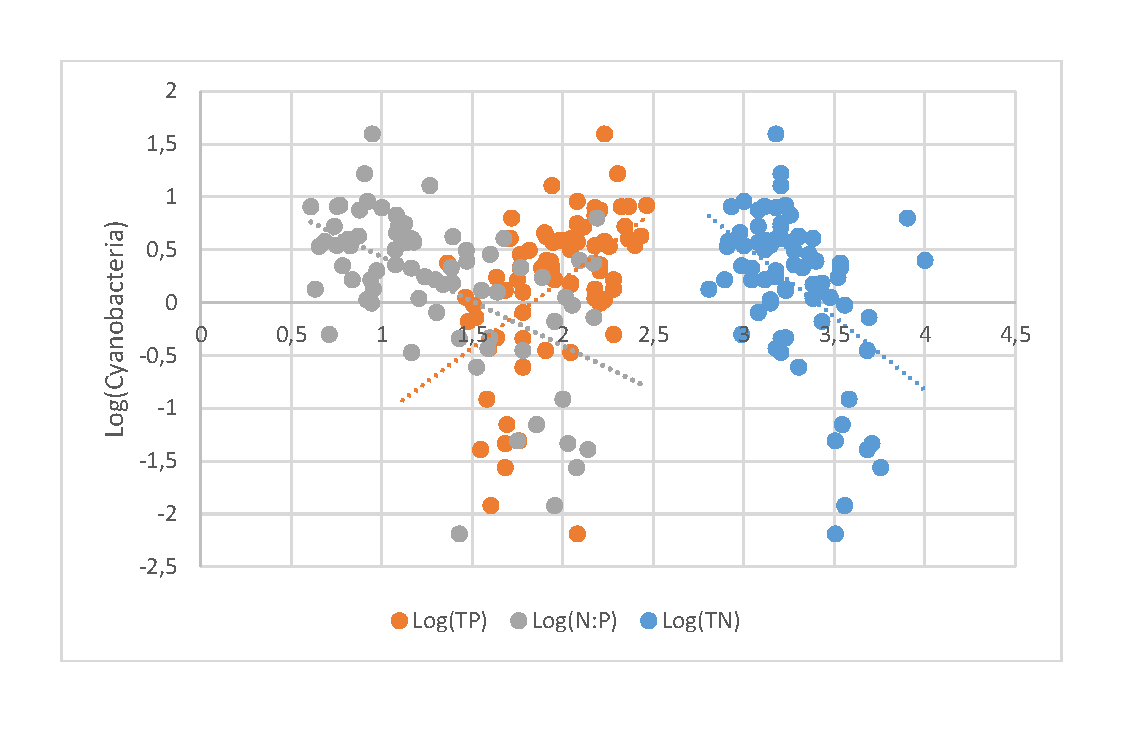Preprint
Article
Nutrient Control to Prevent the Occurrence of Cyanobacterial Blooms in a Eutrophic Lake in Southern Sweden, Used for Drinking Water Supply
This version is not peer-reviewed.
Submitted:
24 April 2018
Posted:
24 April 2018
You are already at the latest version
A peer-reviewed article of this preprint also exists.
Abstract
Control of nutrients, mainly nitrogen (N) and phosphorus (P), plays a significant role in preventing cyanobacterial blooms (harmful algal blooms (HABs)). This study aimed at evaluating changes in the risk of the occurrence of cyanobacterial blooms and advancing the understanding of how N and P affect the growth of cyanobacteria in a eutrophic lake, Lake Vombsjön, in southern Sweden. Statistical analysis was used to demonstrate the pattern of cyanobacterial blooms, that the highest content present in September and the later that algal blooms occur, the more likely it is a cyanobacterial bloom as cyanobacteria became dominating in October and November (90%). Two hypothesises tested in Lake Vombsjön confirmed namely that a high total phosphorus (TP) level correlates with an abundance of cyanobacteria and that low N:P ratio (total nitrogen/total phosphorus < 20) favours the growth of cyanobacteria. To control the growth of cyanobacteria in Lake Vombsjön, the TP level should be kept below 20 µg/L and the N:P ratio be maintained at a level of over 20. The two species Planktothrix agardhii, and Pseudanabaena spp. should be carefully monitored especially in late autumn. Future work should consider any high degree of leakage from the sediment of the dissolved phosphorus available there.

Keywords:
phosphorus
; N:P ratio
; cyanobacteria
; Planktothrix agardhii
; Lake Vombsjön
Copyright: This open access article is published under a Creative Commons CC BY 4.0 license, which permit the free download, distribution, and reuse, provided that the author and preprint are cited in any reuse.
Downloads
585
Views
367
Comments
0
Subscription
Notify me about updates to this article or when a peer-reviewed version is published.
MDPI Initiatives
Important Links
© 2025 MDPI (Basel, Switzerland) unless otherwise stated






